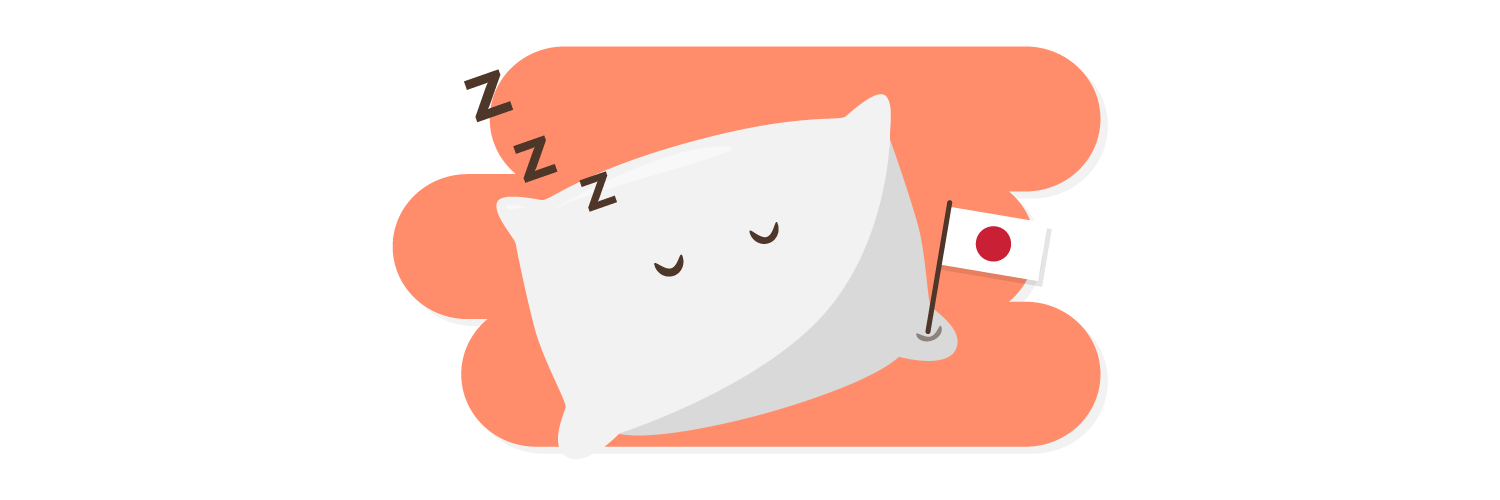12 Happiness & Wellness Practices Around the World
Here are 12 happiness and wellness practices from around the world that you can adapt to fit your lifestyle.
Jul 17, 2018
It turns out that all cultures search for happiness and wellness practices that will make them better. From the ancient Egyptian ritual of cupping therapy to Sweden’s belief in coffee breaks, each country has found a solution that works for them.
Give yourself a little self-love today with these happiness and wellness practices from around the world. If you haven’t looked at your vision board since you made your resolutions in January, now might be the time to resurface your goals for the year and include one of these practices.
Depending on your style, take a quick look at the practices in our infographic or spend some time reading through the details of each practice below.
1. India: Laughter Yoga

You may have heard of meditation yoga, but have you heard of laughter yoga? This practice originates from Dr. Madan Kataria’s 1995 article titled “Laughter -- the Best Medicine,” which discussed the health benefits of laughing. He created a practice that combined breathing exercises with forced laughter. Laughter yoga strengthens your immune functions, brings more oxygen to the body and brain and gives an improved sense of happiness.
How to practice
Incorporate more laughter into your daily life. Do a search in your area for a laughter yoga class. Try laughing by yourself in front of the mirror a few minutes every day. It sounds silly, but it works! Go to a comedy club or local stand up comedian act. Hang out with friends that make you laugh. Be intentional about making laughter a part of your life.
2. Japan: Shinrin Yoku

The Japanese practice Shinrin Yoku, which means “forest bathing.” It was developed during the 1980s. It’s a preventative health care method based on the belief that there are health benefits from living in the forest. The time spent in nature is said to encourage clearer intuition, increased flow of energy, deepening of friendships and overall increase in happiness.
How to practice
Make it a goal of yours to get outdoors and into nature at least once a week. If you are living in a place with dense forests, take a food basket and have a picnic in the woods. If you aren’t located in a forested area, try finding a local garden you can read a book in. Either way, spending time practicing Shinrin Yoku could improve your happiness.
3. Egypt: Cupping Therapy

A medical practice used by the Egyptians, cupping therapy is the practice of pulling bad toxins from the body. The cups used were once animal horns, then bamboo cups and today glass cups are used. The cup is placed on the patient in the area that needs healing and heat is applied. The cup works as a vacuum and blood is drawn to the skin. It is used to treat blood disorders, migraines, skin problems and anxiety.
How to practice
Find a facility that practices cupping therapy near you. This practice is tied closely with acupuncture and is sometimes practiced by acupuncturists. Learn about the different meridians of your body and how they are associated with the pain or discomfort you may be feeling.
4. China: Acupuncture

The traditional Chinese treatment of acupuncture involves inserting needles into a body to balance energy. This should only be done by professionals who are trained in the practice. Depending on the placement of the needle, acupuncture is used to cure headaches, back pain, neck pain, allergies and blood pressure problems.
How to practice
If you are dealing with any of these issues, find an acupuncturist in your area. Make an appointment and discuss what you want out of the practice with your acupuncturist. They should be able to recommend daily practices that will help ease your pain as well.
5. Russia: Banya or Sauna

The Banya is a Russian sauna or steam bath. A banya is a wooden room that is heated with firewood. Once you warm up, you leave the room and jump in cold water (or snow in Russia) and then return when you’ve cooled off. The banya is a place that brings people close together and allows openness and communication among friends. Banyas help cleanse the skin and fight sickness.
How to practice
Plan a sauna day with your friends. Find a sauna and be intentional about going in with an open mind. Maybe try talking about topics that you and your friends find hard to discuss. You’ll come out of the sauna with clean skin and a clear mind.
6. Norway: Friluftsliv

In Norwegian, Friluftsliv translates to “free air life.” The word is used to refer to our outdoor relationship with nature. It suggests that exploration and appreciation of nature will lead to a greater happiness. Being curious and respectful of your surrounding will lead you to success in friluftsliv.
How to practice
Plan a camping trip. Gather your friends and take a trip into nature. Explore your campsite and the area surrounding it. Take note of things that are different from your everyday life. Consider making trips into nature a regular occurance. Be sure to be respectful of your surroundings and leave the space how it was when you arrived.
7. Japan: Inemuri or Power Naps

Have you ever been so exhausted that even just closing your eyes for a few minutes sounds amazing? In Japan the people have embraced this practice of closing their eyes to rest a moment--and it’s done anywhere at anytime, from subway stations to coffee shops. Inemuri is not a full state of sleep, but rather an inbetween stage like daydreaming. It is seen as respectful in Japan because it means the person has worked as hard as they possibly could.
How to practice
When you feel tired throughout the week, try taking a moment and closing your eyes. Embrace the feeling of sleep and allow yourself a moment of peace. It may be useful to set an alarm so that you don’t fall all the way asleep if you are in public.
8. Iceland: Hot Springs

Iceland is known as “the land of fire and ice” because of its unique mix of glaciers and volcanic activity. This geothermal energy heats up some of the bodies of water, creating natural hot springs. These hot springs are said to have benefits such as acne control, anti-aging properties, pain relief, increased endorphins and better blood circulation.
How to practice
Find a natural spring in your area. There are many across the world, not just in cold conditions. If you aren’t in close proximity to a natural hot spring, opt for a hot bath with natural bath salts. Taking time to give your skin some love will improve your day to day activities.
9. South America: Mate Tea

Originating in Argentina, Uruguay and Brazil, yerba mate is an herbal tea that’s made from the leaves of the llex paraguariensis plant. It is commonly used as a replacement for coffee due to its long list of health benefits. Yerba mate is rich in antioxidants, boosts energy, can enhance physical performance, can protect against infections, may help you lose weight and can boost your immune system.
How to practice
Try introducing mate tea into your daily routine. Swap your morning coffee for a cup of mate tea and see if you notice an increase in energy throughout your day. It’s important to note that it does have caffeine in it, so if you have a poor reaction to caffeine, this might not be the practice for you.
10. Tibet: Tibetan Singing Bowls

Tibetan singing bowls are bowls that are used for sound healing. They produce an energy that is said to heal stress disorders, pain, depression and other forms of unease. The sonic waves resonate with your brainwaves and synchronize to create a feeling of peace.
How to practice
Another common version of sound healing is music. Create a playlist of songs that resonate with you and make you feel good. Whenever you feel stressed or uneasy throughout the week, listen to the playlist.
As you can see, there are many different ways to invite happiness and wellbeing into your life. Learn from other cultures and try a new practice that you might not have attempted before. Show appreciation to your friends and family by sharing these practices with them.
11. Sweden: Fika

Fika is a Swedish coffee break, but it’s much different from the coffee break you may be familiar with. Fika is a moment to slow down and truly appreciate the good things in life. Coffee or tea is enjoyed with cookies or some sort of baked goods. By slowing down and appreciating the moment, you’ll experience more peace and happiness in your day.
How to practice
Rather than pouring your coffee into a thermos and racing out the door, try sitting down and enjoying a cup of coffee or tea with a sweet treat. If you aren’t a morning person, try taking a break at some point in your day. Try to do this a few times a week and see what a difference it can make.
12. Nigeria: Ubuntu

Ubuntu is an African word that means “so much” and is used to describe a way of life in which you put others above yourself. This sense of family and community comes from the knowledge that we depend on others to survive. It highlights the traits of sharing, fairness, hospitality, caring and truthfulness among other positive characteristics.
How to practice
Make it your goal to focus on how you interact with others. Is it in a positive way? Pick one trait and focus on that attribute throughout the week. Embrace the togetherness of being around people who support you.
As you can see, there are many different ways to invite happiness and wellbeing into your life. Learn from other cultures and try a new practice that you might not have attempted before. Show appreciation to your friends and family by sharing these practices with them.

Sources:
Shinrin Yoku | BIO EFFECT | Laughter Online University | Medical News Today | Cupping Resource | Healthline | MasterRussian.com | OpenCulture.com | AfricaW.com | Mother Nature Network | The Kitchn | Authentic Self Empowerment






